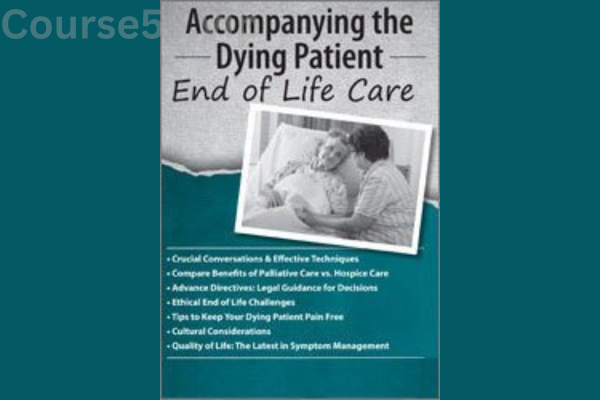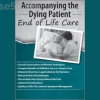-
×
 Ultimate Guide Technical Trading
1 × $23.10
Ultimate Guide Technical Trading
1 × $23.10 -
×
 Carl Bretzke Bundle
1 × $46.00
Carl Bretzke Bundle
1 × $46.00 -
×
 Mindfulness-Based Stress Reduction for Teens By Gina Biegel - PESI
1 × $23.10
Mindfulness-Based Stress Reduction for Teens By Gina Biegel - PESI
1 × $23.10 -
×
 Orthopedic Challenges: Expert Strategies to Avoid Harm & Enhance Healing By William Mazzocco - PESI
1 × $23.10
Orthopedic Challenges: Expert Strategies to Avoid Harm & Enhance Healing By William Mazzocco - PESI
1 × $23.10 -
×
 Maine Legal and Ethical Issues for Mental Health Clinicians By Susan Lewis - PESI
1 × $23.10
Maine Legal and Ethical Issues for Mental Health Clinicians By Susan Lewis - PESI
1 × $23.10 -
×
 SEO Operating System By James Ewen
1 × $15.00
SEO Operating System By James Ewen
1 × $15.00 -
×
 Ten Best-Ever Anxiety Treatment Techniques By Margaret Wehrenberg - PESI
1 × $23.10
Ten Best-Ever Anxiety Treatment Techniques By Margaret Wehrenberg - PESI
1 × $23.10 -
×
 ECOM ACADEMY DAN DASILVA | MAKE 6K PER DAY WITH SHOPIFY STORE
1 × $23.10
ECOM ACADEMY DAN DASILVA | MAKE 6K PER DAY WITH SHOPIFY STORE
1 × $23.10 -
×
 Trauma-Informed Yoga for Children and Adolescents: Mind-Body Sequencing for ADHD, Anxiety and Post-Traumatic Stress By Kathy Flaminio
1 × $23.10
Trauma-Informed Yoga for Children and Adolescents: Mind-Body Sequencing for ADHD, Anxiety and Post-Traumatic Stress By Kathy Flaminio
1 × $23.10 -
×
 The Marriage Reset: From Obligation To Adventure By Dani Johnson
1 × $31.00
The Marriage Reset: From Obligation To Adventure By Dani Johnson
1 × $31.00 -
×
 What to Do in the First 90 Days of Your New Job
1 × $23.10
What to Do in the First 90 Days of Your New Job
1 × $23.10 -
×
 Legal Issues in Behavioral Health Maryland: Legal and Ethical Considerations By Lois Fenner - PESI
1 × $23.10
Legal Issues in Behavioral Health Maryland: Legal and Ethical Considerations By Lois Fenner - PESI
1 × $23.10
Accompanying the Dying Patient: End of Life Care by Fran Hoh
$199.00 Original price was: $199.00.$23.10Current price is: $23.10.
SKU: C55vip.10946UftYVeKM
Category: Download
Tags: Accompanying the Dying Patient, End of Life Care, Fran Hoh, Life
Accompanying the Dying Patient: End of Life Care – Digital Download!

Accompanying the Dying Patient: End of Life Care by Fran Hoh
Overview

Supporting the Terminally Ill: Comprehensive End-of-Life Care
End-of-life care plays a crucial role in shaping a patient’s final experiences, influencing both their comfort and emotional well-being. While some individuals may focus on pursuing medical interventions or holding onto hope for recovery, many prioritize relief from distress and meaningful emotional connections. This evolving perspective highlights the importance of a holistic approach, but what does it truly mean to support someone in their final moments? This in-depth review explores key aspects of end-of-life care, emphasizing pain relief, psychological support, and effective communication. By drawing on best practices in the field, we examine how caregivers can navigate this profound and challenging journey alongside patients and their families.
Comprehending the Nature of End-of-Life Care
End-of-life care extends beyond merely addressing a patient’s physical condition—it embraces a well-rounded approach that considers emotional, social, and spiritual dimensions. Healthcare professionals play a fundamental role in preserving a patient’s quality of life during this delicate phase. Studies from leading medical publications suggest that managing symptoms effectively not only reduces discomfort but also improves a patient’s overall sense of peace (Smith, 2020).
A core element of this care involves alleviating common distressing symptoms such as pain, breathlessness, and anxiety. Research indicates that a collaborative strategy often yields the most effective outcomes in symptom management (Jones & Wilson, 2019). This method involves coordinated efforts among physicians, nurses, social workers, and, when applicable, mental health professionals. Each specialist contributes a distinct skill set, forming a comprehensive treatment plan that addresses the diverse needs of patients.
Effective symptom relief is especially vital because it creates an environment where meaningful conversations can take place. When patients experience less physical discomfort, they can better express their emotions, fears, and final wishes. This, in turn, provides comfort to families, helping them cope with grief and uncertainty during an emotionally turbulent time.
Essential Components of End-of-Life Care
• Pain and Symptom Management: Addressing discomfort, breathlessness, and other physical concerns.
• Emotional and Psychological Support: Providing counseling and coping strategies.
• Cultural Sensitivity: Recognizing and respecting social, cultural, and spiritual perspectives.
• Clear Communication: Encouraging open discussions between medical staff, patients, and their loved ones.
Effective Approaches to Symptom Relief
While pain control is often a primary concern in end-of-life care, a broader perspective that includes mental and emotional distress is equally important. According to the American Academy of Hospice and Palliative Medicine (AAHPM), around 40% of terminal patients experience moderate to severe pain as they approach the end of life (Thompson, 2021). Treatment strategies may include a combination of medication, physiotherapy, and complementary therapies such as massage or acupuncture. Each method aims to optimize patient comfort and improve their quality of life.
Common Symptoms and Management Strategies
| Symptom | Treatment Approaches |
|---|---|
| Pain | Opioids, NSAIDs, and physiotherapy |
| Anxiety | Benzodiazepines, counseling, and relaxation techniques |
| Breathlessness | Oxygen therapy, body repositioning, and anxiety reduction methods |
| Nausea | Antiemetics, dietary adjustments, and hydration |
Providing Emotional and Psychological Support
Beyond physical relief, emotional care is a fundamental aspect of end-of-life treatment. Studies suggest that unaddressed emotional distress can intensify physical symptoms, leading to an overall decline in quality of life (Williams, 2021). As such, caregivers must go beyond symptom control to provide psychological support and mental health resources.
Palliative care professionals often recommend using therapeutic techniques such as guided visualization and cognitive-behavioral therapy (CBT). These approaches help patients confront their anxieties about mortality, enabling them to find greater peace in their final days. Caregivers may also engage patients in discussions about their life stories, accomplishments, and unresolved emotions—these reflective conversations can be deeply healing, helping individuals achieve a sense of closure.
Enhancing Communication Between Patients and Families
Open and honest communication is a cornerstone of compassionate end-of-life care. As individuals near the end of their journey, they often wish to share their emotions and thoughts, not just about their approaching death but also about their preferences for care. This makes it essential for healthcare providers to create an environment where such discussions can take place comfortably.
A report from the National Institute of Health (NIH) highlights that families benefit significantly from in-depth conversations with medical professionals regarding their loved one’s condition (Anderson et al., 2020). These discussions often include details about prognosis, potential interventions, and what to expect in the final days or weeks.
Healthcare workers can enhance communication by employing the following techniques:
• Active Listening: Fully engaging in what the patient is expressing.
• Encouraging Open-Ended Questions: Inviting patients to share their thoughts and feelings.
• Demonstrating Empathy: Responding with understanding and compassion.
By fostering clear and empathetic communication, caregivers can ease anxiety for both patients and their families, facilitating more informed decision-making.
Equipping Caregivers with Proper Training
Delivering effective end-of-life care requires caregivers to undergo specialized training. Addressing sensitive issues like bereavement, ethical considerations, and complex family dynamics demands a deep understanding and a compassionate approach. Organizations such as the Hospice and Palliative Nurses Association (HPNA) offer extensive training programs to equip caregivers with essential skills.
These educational programs emphasize the importance of ethical decision-making and respecting patient autonomy. Caregivers must be well-versed in legal aspects of end-of-life care, such as advanced directives and do-not-resuscitate (DNR) orders.
Training also prepares caregivers to manage emotionally intense situations that may arise in family discussions. These skills are invaluable in helping families navigate the emotional complexities of end-of-life decision-making while ensuring that the patient’s wishes remain the central focus.
Cultural Awareness in End-of-Life Care
Cultural beliefs profoundly influence a patient’s preferences regarding their final days. Recognizing and respecting these beliefs can greatly enhance the patient’s overall experience. For example, in some cultures, dying at home rather than in a medical facility is considered highly significant. When possible, healthcare teams should honor these wishes and integrate culturally appropriate practices into care plans.
Holistic Perspective: The Core Elements of End-of-Life Care
End-of-life care requires a multi-dimensional approach that integrates physical relief, emotional well-being, communication, professional caregiver training, and cultural respect. Each of these elements contributes to a more compassionate and dignified experience for both patients and their families.
• Physical Comfort: Implement strategies to manage pain and other distressing symptoms.
• Emotional Well-Being: Use therapy and counseling to support mental health.
• Effective Communication: Encourage open conversations among caregivers, patients, and loved ones.
• Cultural Considerations: Respect individual traditions and values in end-of-life planning.
As healthcare practices evolve, it remains essential to ensure that end-of-life care remains patient-centered, respectful, and attuned to the unique needs of each individual. By adopting a compassionate and well-rounded approach, caregivers can uphold a patient’s dignity while ensuring their final days are as peaceful as possible.
Final Thoughts
Being present for someone in their last moments goes beyond medical treatments and procedural care—it is about offering a compassionate presence that acknowledges both the individual’s lived experiences and the emotions of their loved ones. The difficulties involved in this journey are undeniable, but the ability to provide comfort, ensure dignity, and make a profound difference in a patient’s final days is invaluable.
Frequently Asked Questions:
Business Model Innovation: We operate a group buying strategy, allowing participants to share costs and access popular courses at reduced prices. This model benefits individuals with limited financial resources, despite concerns from content creators about distribution methods.
Legal Considerations: The legality of our operations involves complex issues. Although we don’t have explicit permission from course creators to resell their content, there are no specific resale restrictions stated at the time of purchase. This ambiguity creates an opportunity for us to provide affordable educational resources.
Quality Control: We ensure that all course materials purchased are identical to those offered directly by the creators. However, it’s important to understand that we are not official providers. As such, our offerings do not include:
– Live coaching calls or sessions with the course author.
– Access to exclusive author-controlled groups or portals.
– Membership in private forums.
– Direct email support from the author or their team.
We aim to reduce the cost barrier in education by offering these courses independently, without the premium services available through official channels. We appreciate your understanding of our unique approach.
Be the first to review “Accompanying the Dying Patient: End of Life Care by Fran Hoh” Cancel reply
You must be logged in to post a review.











Reviews
There are no reviews yet.